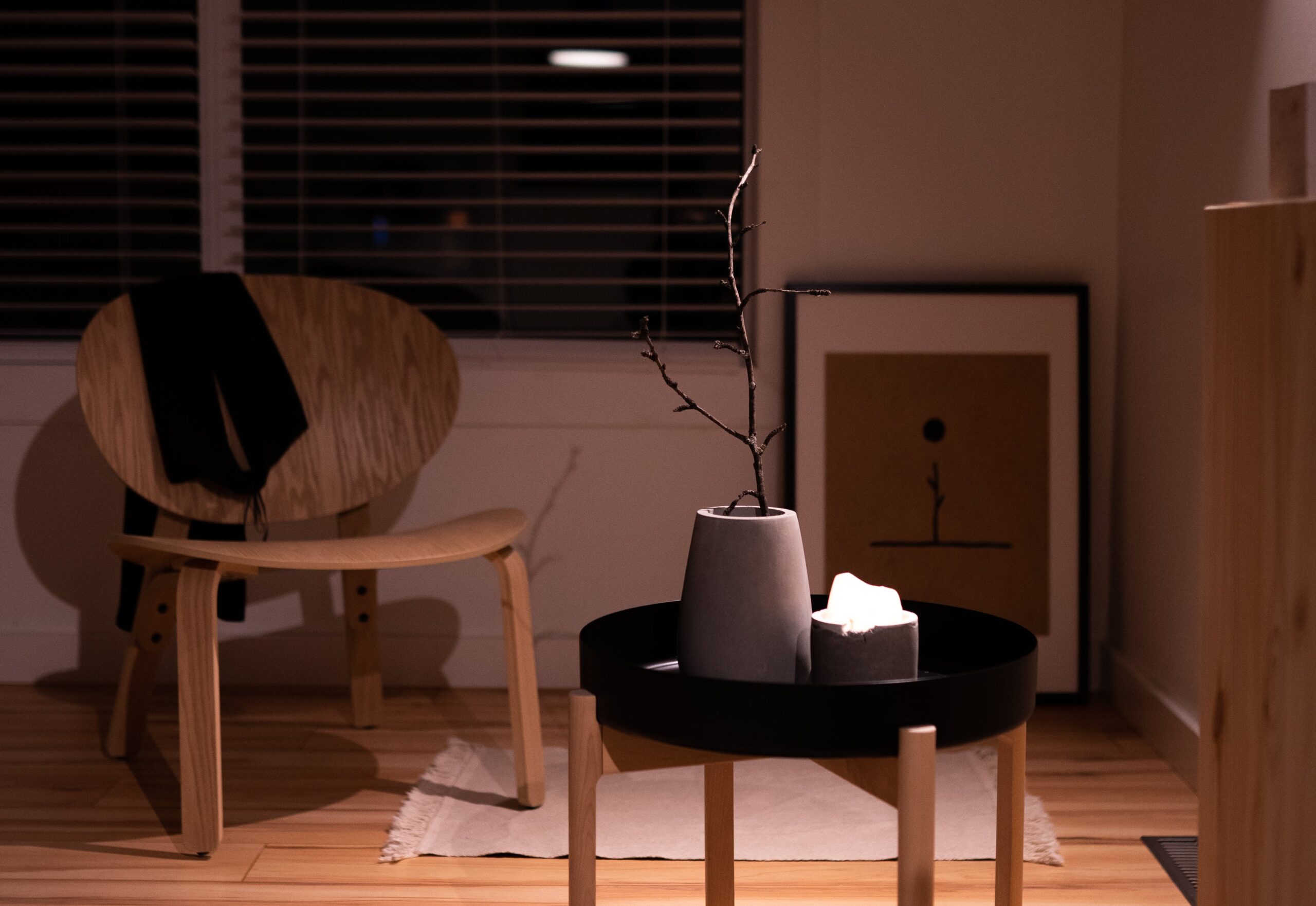Welcome to the world of minimalist art and decor! In a time when life seems to be moving at lightning speed, the simplicity and tranquility of minimalism can offer a much-needed respite. Whether you’re looking to revamp your living space or simply appreciate the beauty in minimalistic design, this article will guide you through the various aspects of minimalist art and decor.
Minimalist Art and Decor in 2024
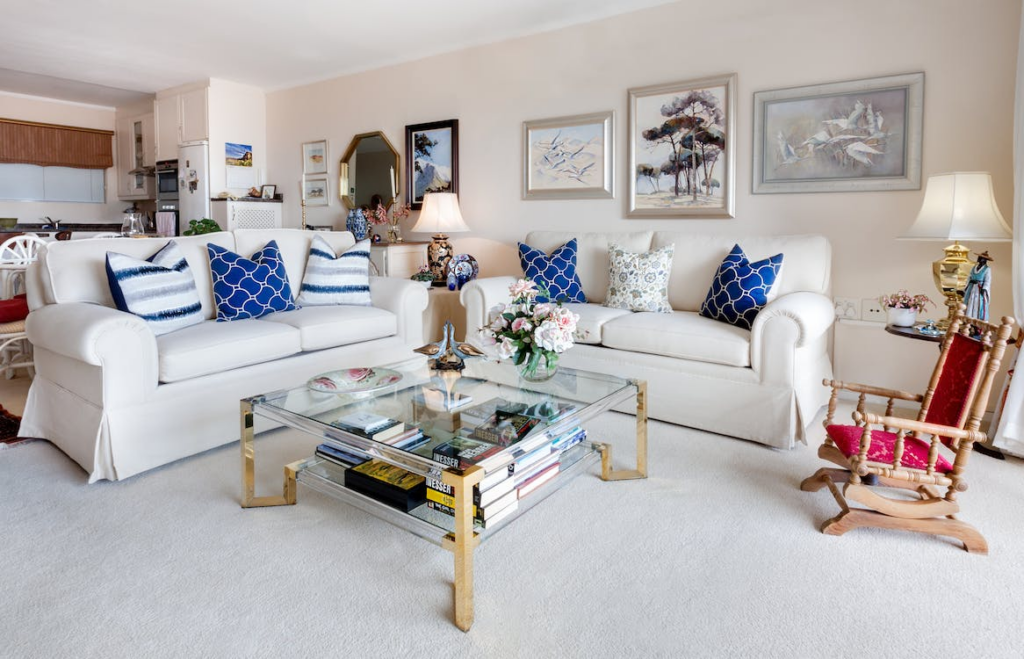
Minimalist art and decor are all about finding beauty and personality in simplicity. It is an artistic style that values clean lines, open spaces, and a deliberate absence of clutter. By stripping away excess and focusing on the essentials, minimalist design creates a sense of calm and balance in any space.
In this article “Minimalist Art and Decor in 2024 : Adding Personality to Simplicity”, we will delve into the history of minimalist art and decor, explore different trends in minimalist design, discuss the challenges and solutions in creating minimalist interiors, highlight the latest home decor and interior design trends, examine the role of art in minimalism, and provide tips on how to create a minimalist aesthetic.
So, if you’re ready to embrace simplicity and add a touch of elegance to your space, let’s dive in and discover the world of minimalist art and decor together!
History of Minimalist Art and Decor
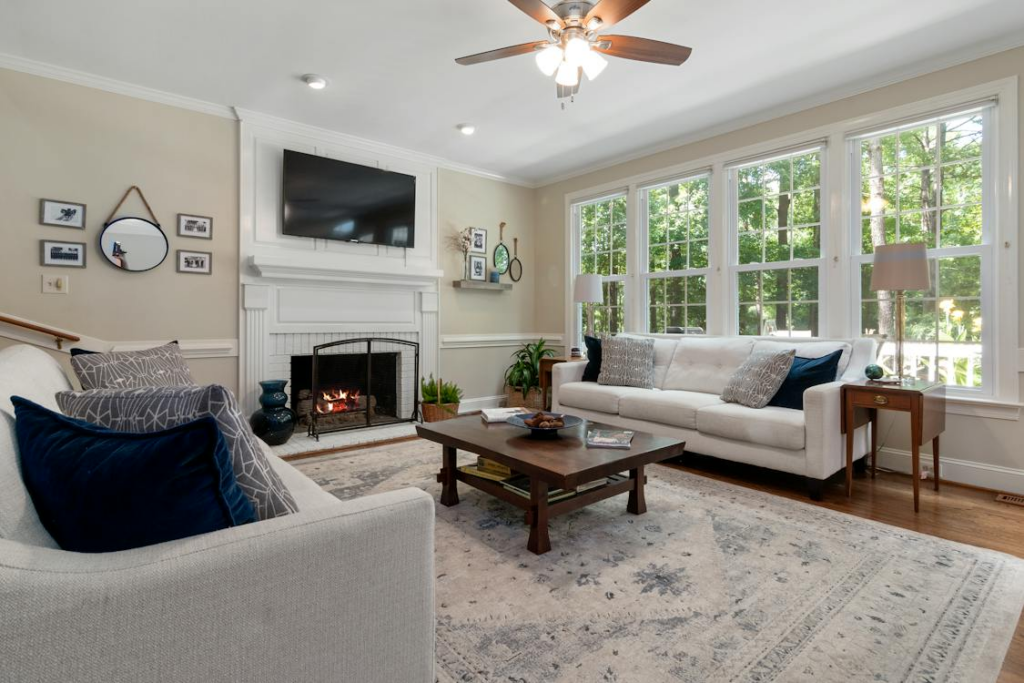
Introduction
Have you ever noticed how simplicity can be so captivating? Minimalist art and decor embrace the power of simplicity, where less is definitely more. This style aims to create a sense of harmony and tranquility by stripping away the excess and focusing on clean lines, geometric shapes, and a limited color palette. In this article, we will delve into the fascinating history of minimalist art and decor, exploring its roots in the artistic movement of the 1960s and its evolution to the current design trend of minimal maximalism.
Artistic Movement of the 1960s
Minimalist art and decor have their origins in the artistic movement of the 1960s. During this time, artists began to embrace simplicity and geometric shapes, rejecting the ornamental and excessive. They sought to reduce art to its purest form, stripping away unnecessary elements and focusing on essential geometric shapes and lines. Artists like Donald Judd, Dan Flavin, and Agnes Martin became pioneers of this movement, creating artworks that emphasized simplicity and objectivity.
Evolution to Minimal Maximalism
While minimalist art and decor have their roots in the 1960s, they have evolved over time. Today, we see a shift towards minimal maximalism, which is a top design trend in 2023. This design approach takes minimalist principles and combines them with current design movements in different countries like the US, France, and Italy. Minimal maximalism embraces the simplicity and clean lines of minimalism but adds a touch of opulence and visual interest through the use of luxurious materials, bold colors, and intricate patterns.
- Minimalist art and decor stem from the artistic movement of the 1960s, consisting of geometric shapes and simplicity.
- Minimal maximalism is a top design trend in 2023, with a focus on current design movements in the US, France, and Italy.
In the next section, we will explore the different trends in minimalist design, allowing you to discover the variety this style has to offer. So, let’s dive in and explore the world of minimalist art and decor!
Different Trends in Minimalist Design
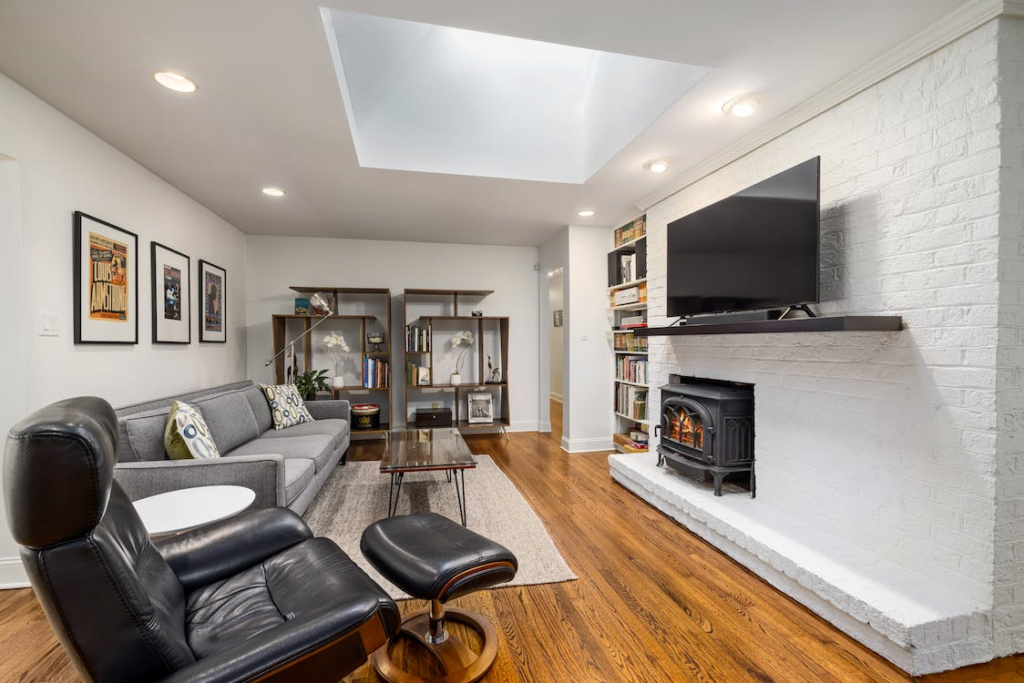
Minimalist design is all about simplicity, clean lines, and a clutter-free aesthetic. However, that doesn’t mean it has to be boring or static. In fact, there are several different trends in minimalist design that can add personality and uniqueness to your space. Whether you’re a fan of sustainable living, love bringing nature indoors, or enjoy incorporating art into your minimalist decor, there’s a trend that’s perfect for you. Let’s explore some of these exciting trends:
Sustainable Minimalism
Sustainable living has become increasingly important in recent years, and it has made its way into the world of minimalist design as well. Sustainable minimalism focuses on using eco-friendly materials and incorporating elements that support a greener lifestyle. Some key features of sustainable minimalism include:
- Natural and renewable materials: Opt for furniture and decor made from sustainable materials like bamboo, reclaimed wood, and organic textiles.
- Energy-efficient lighting: Choose LED lights or natural lighting options to reduce your energy consumption.
- Upcycling and repurposing: Give new life to old items by repurposing them or upcycling them into something functional and beautiful.
Biophilic Minimalism
Biophilic design is all about bringing nature indoors and creating a connection with the natural world. When combined with minimalism, it creates a harmonious and soothing environment. Here’s how you can achieve biophilic minimalism:
- Indoor plants: Introduce greenery into your space with potted plants or hanging planters.
- Natural materials: Incorporate natural elements like wood, stone, or rattan into your furniture and decor.
- Natural light: Maximize natural light by using sheer curtains or skylights to create a bright and airy atmosphere.
Artful Minimalism
Who says minimalist design can’t have a touch of artistry? Artful minimalism is all about incorporating unique art pieces into your minimalist decor. Here are some ways to add art to your minimalist space:
- Gallery walls: Create a gallery wall with a collection of minimalist artwork or photographs.
- Statement artwork: Choose one large and impactful artwork as a focal point in your space.
- Minimalist sculptures: Opt for simple and abstract sculptures that add visual interest to your minimalist decor.
Digital Detox Minimalism
In today’s digital age, it’s important to create spaces where you can disconnect and unwind. Digital detox minimalism focuses on creating a tranquil environment free from digital distractions. Here’s how you can create a space for relaxation and tranquility:
- Designated tech-free zones: Create specific areas in your home where electronic devices are not allowed, such as a reading nook or a meditation corner.
- Minimalistic entertainment setup: Hide away your TVs and audio equipment when they’re not in use to minimize visual clutter.
- Soft and soothing colors: Choose calming colors like blues and greens to promote relaxation and reduce stress.
By embracing these different trends in minimalism, you can add personality and uniqueness to your minimalist space. Whether you choose to go sustainable, bring nature indoors, incorporate art, or create a digital-free zone, remember that the key to successful minimalist design is to focus on quality over quantity and to create a space that truly reflects your personal style and values. So go ahead and make your minimalist space come alive with these exciting trends!
Challenges and Solutions in Minimalist Interiors

1. Maintaining Free-of-Clutter Surfaces
One of the main challenges in minimalist interiors is keeping surfaces free of clutter. With limited decorative elements, every item on display becomes more noticeable. Here’s how you can tackle this challenge:
- Declutter Regularly: Make it a habit to declutter your space regularly. Get rid of items that are no longer needed or don’t align with the minimalist aesthetic. Donate or recycle items that can be repurposed.
- Smart Storage Solutions: Invest in clever storage solutions to keep your belongings organized and out of sight. Utilize storage ottomans, built-in cabinets, and floating shelves to maximize storage space without compromising on the minimalist look.
- One In, One Out Rule: Implement the “one in, one out” rule. For every new item you bring into your home, remove one item to maintain a clutter-free environment.
2. Creating Sleek and Sophisticated Interiors
Minimalist interiors aim to achieve a sleek and sophisticated look. To accomplish this, it’s essential to address the following challenges:
- Quality Over Quantity: Choose furniture and decor items that are well-crafted and of high quality. Invest in timeless pieces that will withstand the test of time. This approach is not only aesthetically pleasing but also ensures durability.
- Attention to Detail: Pay attention to the small details in your minimalist interior. Opt for sleek and minimalist hardware, such as handles and knobs, that blend seamlessly with the overall design. Ensure that all elements, from lighting fixtures to window treatments, are carefully chosen to maintain a cohesive and refined aesthetic.
- Minimalist Architecture: If you have the opportunity, consider incorporating architectural elements that align with the minimalist style. Clean lines, open spaces, and minimalistic finishes can enhance the overall look of your interior.
Remember, the goal of minimalist interiors is to create a sense of calm and simplicity. These solutions will help you overcome the challenges and achieve a minimalist aesthetic that is both functional and visually appealing.
“Minimalism is not the lack of something. It’s the perfect amount of something.” – Nicholas Burroughs
In the next section, we will explore the latest trends in minimalist home decor and interior design. So, let’s dive in!
Also Read: Creating Tranquil Spaces: Achieving Serenity with Minimalist Design in 2024.
Minimalist Home Decor and Interior Design Trends
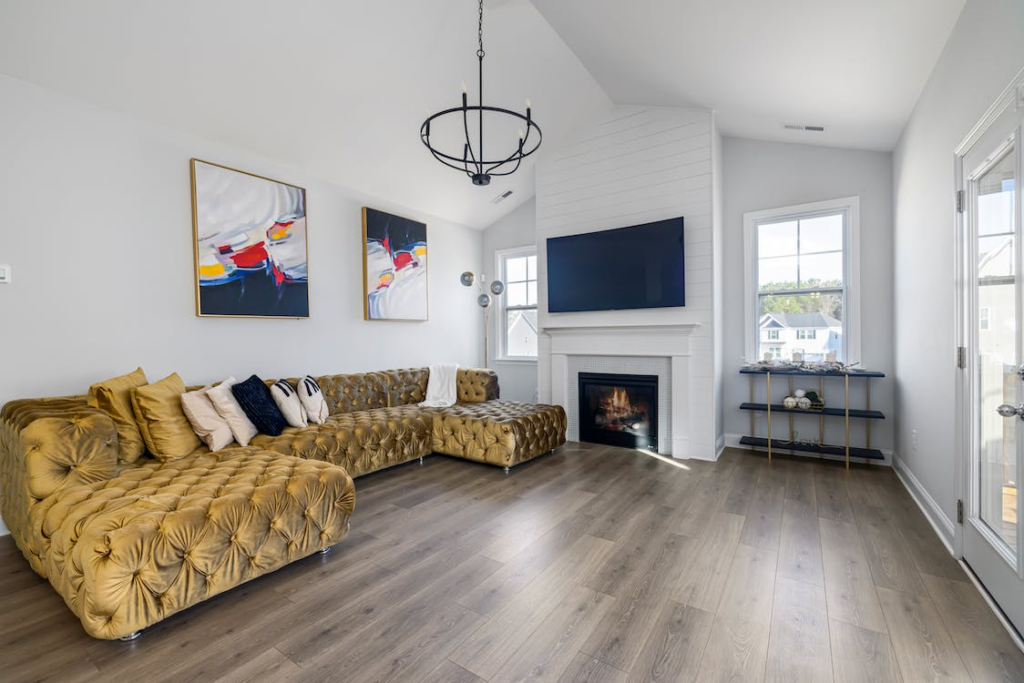
Minimalist home decor and interior design have become increasingly popular in recent years. This style emphasizes simplicity, clean lines, and a clutter-free environment. Minimalist design focuses on choosing a few key pieces with timeless design and fine craftsmanship, rather than filling a space with numerous decorative items. In a minimalist interior, less is definitely more. Let’s explore some of the top trends in minimalist home decor and interior design for 2024:
Colors, Textures, and Materials for 2024
- Neutral palettes: Minimalist design often incorporates neutral colors such as whites, grays, and earth tones. These colors create a calm and serene atmosphere, allowing other design elements to take center stage.
- Pop of color: While minimalism traditionally emphasizes a neutral color palette, incorporating pops of color has become a new trend in minimalist design. Adding a vibrant accent piece or using bold, contrasting colors in a minimalist space can create visual interest and make a statement.
- Natural materials: Minimalist design embraces natural materials such as wood, stone, and organic textiles. These materials add warmth and texture to a minimalist space, preventing it from feeling cold or sterile.
- Sustainable materials: As sustainability becomes a more important consideration for homeowners, incorporating sustainable materials into minimalist design has gained popularity. Reclaimed wood, recycled metal, and eco-friendly fabrics are great options for creating an environmentally-friendly minimalist interior.
Incorporating Minimalist Wall Decor
- Minimalist art: Simple, abstract, and geometric art pieces are great choices for minimalist wall decor. These pieces can add visual interest without overwhelming the space.
- Gallery walls: Creating a gallery wall with a collection of minimalist prints or photographs is another popular trend. Choose frames in a consistent color and shape to maintain a cohesive and minimalist aesthetic.
- Wall shelves: Functional wall shelves can serve both decorative and storage purposes in a minimalist space. Displaying a few carefully chosen items on the shelves can add personality and style.
Engendering Tranquility and Simplicity
- Decluttered spaces: One of the key principles of minimalist design is a clutter-free environment. Invest in organizational systems to keep surfaces clear and minimize visual distractions.
- Open layouts: Minimalism often favors open and airy spaces. Removing unnecessary walls and incorporating flowing floor plans can create a sense of spaciousness and simplicity.
- Natural light: Maximizing natural light is crucial in minimalist design. Use sheer window coverings or no window coverings at all to let in as much light as possible. Mirrors can also be strategically placed to reflect natural light and make spaces appear larger.
Minimalist home decor and interior design offer a sense of calm, serenity, and sophistication. By focusing on simplicity, clean lines, and incorporating natural elements, you can create a stylish and inviting minimalist space that reflects your personal taste. Remember, less is more, and each piece you choose should have a purpose and add value to the overall design. So, embrace minimalism and bring a sense of tranquility to your home.
Art in Minimalist Design
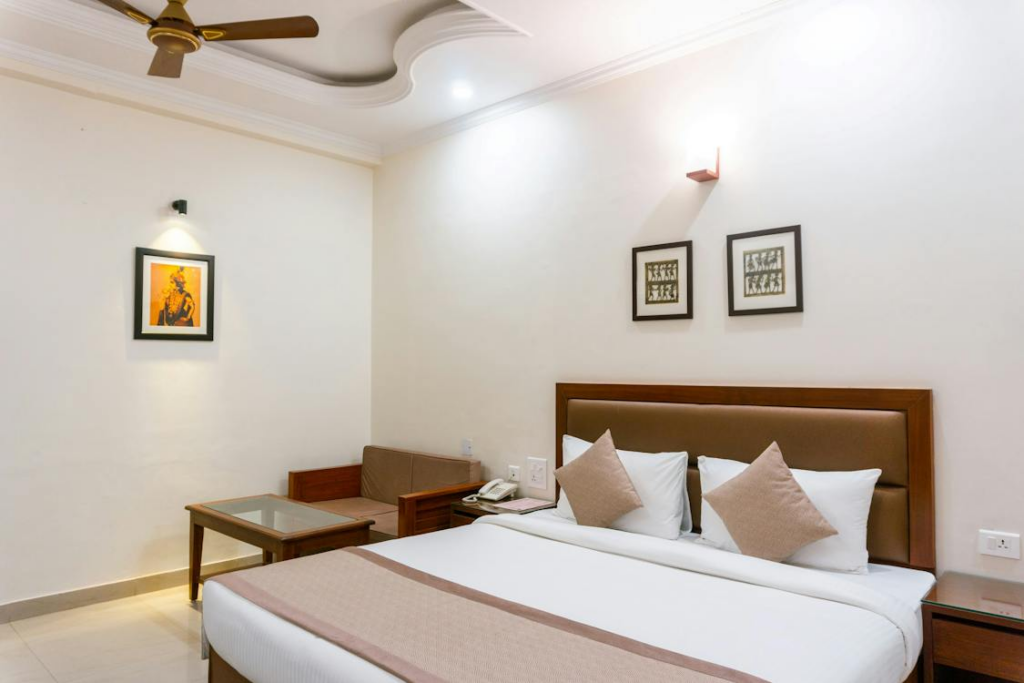
Art plays a crucial role in minimalist design, adding personality and visual appeal to the simplicity of the space. Incorporating art in a minimalist interior allows for self-expression while maintaining the clean and uncluttered aesthetic. Here are some key aspects to consider when choosing art for your minimalist design:
Minimalist Line Art
Minimal line art is a retro style that has gained popularity in recent years. This style embraces simplicity and uses clean lines to create minimalist illustrations. The black and white aesthetic of line art allows it to seamlessly blend into any minimalist interior. Whether it’s a portrait or an abstract representation, line art can add a touch of elegance and sophistication to your space.
Use of Abstract and Simple Art
Abstract art is another fantastic option for minimalist design. Its non-representational nature allows for interpretation and adds depth to the space. Abstract art can be a focal point in a minimalist interior, bringing visual interest and a sense of artistic expression. Opt for simple and bold abstract pieces that complement the overall color scheme and aesthetic of the room.
Role of Negative Space
Negative space is an essential element in minimalist design. It refers to the empty space surrounding an artwork or within a composition. Creating a balance between art and negative space is crucial in minimalist aesthetics. The presence of negative space allows the eye to appreciate the simplicity and focus on the art itself. Embrace the power of empty space and curate your art collection with intention to maintain a harmonious and uncluttered atmosphere.
When choosing art for your minimalist design, consider the following tips:
- Select pieces that align with the overall color palette and aesthetic of your space.
- Opt for simple and minimalistic frames that complement the artwork without overpowering it.
- Choose artwork that resonates with you personally, as it will add a sense of authenticity and meaning to your space.
- Experiment with different sizes and mediums to create visual interest and balance within the room.
Remember, art is a form of self-expression and should reflect your personality and taste. Whether you opt for minimalist line art or abstract pieces, choose artwork that brings joy and enhances the overall ambiance of your minimalist interior.
Creating a Minimalist Aesthetic
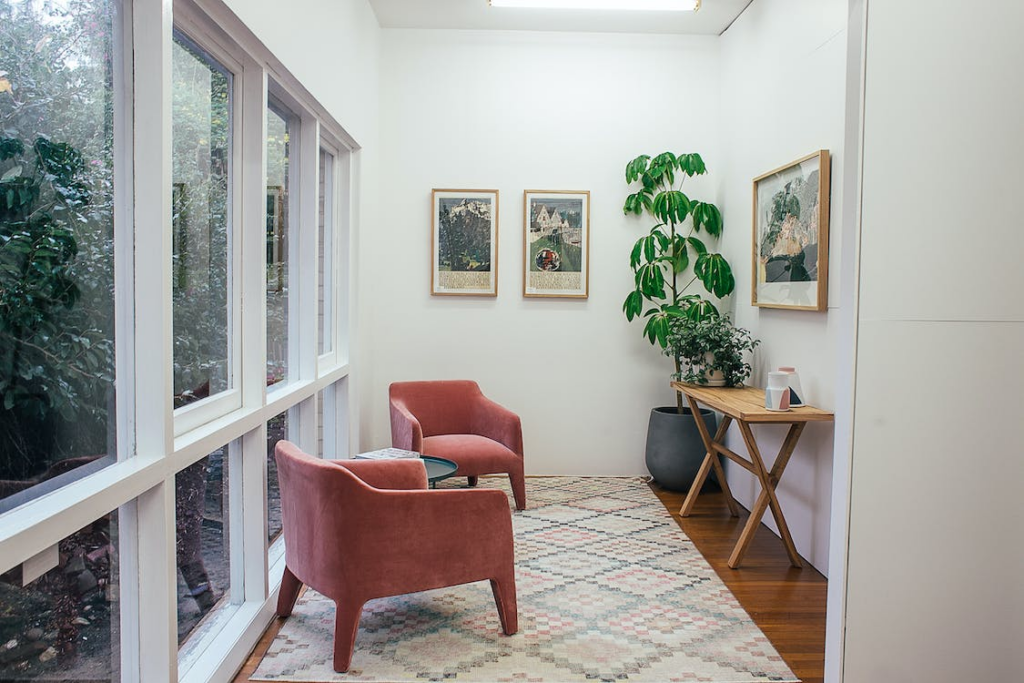
Creating a minimalist aesthetic in your home is all about harmony, balance, and simplicity. It’s about creating a space that feels calm, uncluttered, and visually appealing. Here are some key elements to consider when designing a minimalist interior:
Harmony and Balance in Design
Harmony and balance are at the core of minimalist design. It’s important to create a sense of cohesion throughout your space to achieve a visually pleasing result. Here are some tips for creating harmony in your minimalist aesthetic:
- Geometric Shapes: Utilize geometric shapes to create interest and balance in your space. Incorporate furniture with clean lines and simple shapes. For example, a square coffee table or a rectangular dining table can add a sense of order to your minimalist interior.
- Empty Space: Embrace the power of empty space in your design. Empty space allows the eye to appreciate the simplicity and minimalism of your decor. Avoid overfilling your space with unnecessary furniture or accessories. Remember, less is more.
Lighting Choices
Lighting plays a crucial role in creating the right atmosphere in a minimalist interior. Here are some lighting choices to consider:
- Natural Light: Maximize natural light in your space by keeping windows clear of heavy curtains or blinds. Natural light creates a sense of openness and brings a refreshing energy to your minimalist aesthetic.
- Minimalist Light Fixtures: Choose light fixtures that embody simplicity and minimalism. Opt for fixtures with clean lines and neutral colors. Pendant lights and recessed lighting are popular choices in minimalist interiors.
Incorporating Natural Elements
Incorporating natural elements can add warmth and texture to a minimalist interior. Here’s how to bring nature into your design:
- Wood: Use wooden furniture or accents to add natural warmth to your space. Consider incorporating wooden shelves, a dining table, or chairs.
- Grasses and Plants: Incorporate greenery into your minimalist interior with plants or grasses. They bring life, fresh air, and a touch of nature to your space.
- Organic Textiles: Choose natural, organic textiles for your furniture, such as linen or cotton. These materials add a soft and cozy touch to your minimalist aesthetic.
Remember, a minimalist aesthetic is all about simplicity and focus. Here are some additional tips to keep in mind:
- Neutral Color Palette: Stick to a neutral color palette, such as whites, creams, grays, and earth tones. These colors create a sense of calmness and timelessness in your minimalist interior.
- Clean Lines: Opt for furniture and decor pieces with clean, straight lines. Avoid ornate or overly decorative pieces that can disrupt the simplicity of your design.
- Declutter Regularly: Keep your minimalist space clutter-free by regularly decluttering and organizing your belongings. Create storage solutions that hide away any unnecessary items to maintain a clean and uncluttered aesthetic.
With these tips, you can create a minimalist aesthetic that is both visually appealing and inviting. Embrace simplicity, balance, and natural elements to achieve a harmonious and calming space. Less is truly more when it comes to minimalist design.
Also Read: Creating a Minimalist Home Office in 2024 : Boosting Productivity and Focus.
Conclusion
In conclusion, minimalist art and decor offer a unique approach to design that focuses on simplicity and functionality. By embracing the principles of minimalism, you can create a calming and clutter-free living space that allows you to fully appreciate the beauty of each carefully chosen piece. Remember, less is more when it comes to minimalist design, so choose your items wisely and opt for timeless design and fine craftsmanship.
At Minimalist Home Guru, we understand the importance of creating a minimalist aesthetic in your home. Our goal is to provide guidance and inspiration for new home buyers who prefer a minimalist aesthetic. Whether you’re looking for advice on decluttering, selecting clean-lined furniture, or creating a calming atmosphere, we’re here to help.
For more inspirational information and design ideas, read The Art of Home Decoration : Tips and Tricks for Homeowners in 2023. Happy Decorating!!
To learn more about creating a minimalist home and to explore our range of products and services, visit us at Minimalist Home Guru. Let us guide you on your journey to a simplified and harmonious living space.
Frequently Asked Questions
- What is minimalist art and decor?
Minimalist art and decor is a style that embraces simplicity and minimalism. It focuses on clean lines, neutral colors, and uncluttered spaces, aiming to create a sense of calm and tranquility while adding a touch of personality to the space. - How do I choose minimalist artwork for my home?
When choosing minimalist artwork, look for pieces with simple and geometric shapes, neutral or monochromatic color palettes, and minimal details. Consider your personal style and the overall aesthetic of your space to ensure the artwork complements the existing decor. - What are some popular minimalist art techniques?
Some popular minimalist art techniques include geometric abstraction, monochromatic paintings, use of negative space, and minimalist sculpture. These techniques focus on simplicity and stripped-down aesthetics, often using basic shapes, colors, and lines. - How can I incorporate minimalist decor into my home?
To incorporate minimalist decor, focus on decluttering your space and keeping only essential items. Opt for furniture with clean lines and simple designs, use neutral colors and natural materials, and keep decorative elements to a minimum. Emphasize functionality and organization. - Is minimalist art and decor suitable for any interior style?
Yes, minimalist art and decor can blend seamlessly with various interior styles. It complements modern, contemporary, Scandinavian, and even traditional styles. The clean and simple aesthetic of minimalist decor can help create a cohesive and harmonious look in any space.

